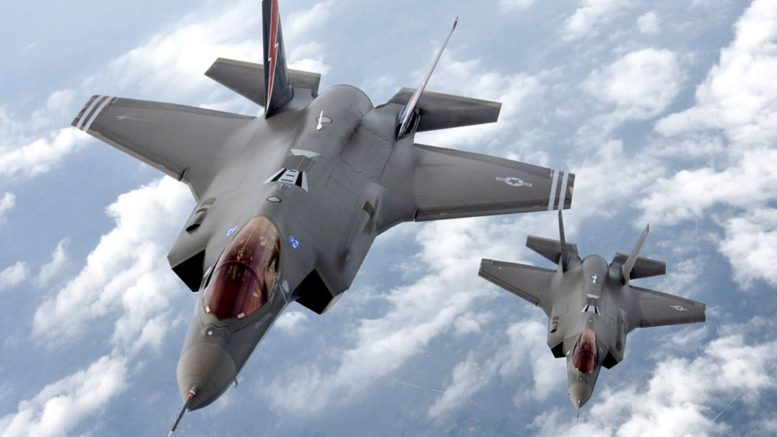After years of troubling news about performance and cost overruns, Lockheed Martin’s F-35 program has received a vote of approval from the United States Air Force.
On August 2, the Air Force declared the F-35A “combat ready.” With a rating of IOC (Initial Operations Capability), the Air Force makes official the declaration that the fifth generation $400 billion weapons system has passed tests to assess its ability to fly combat missions.
Gen. Hawk Carlisle, the commander of Air Combat Command, said the fighter’s performance had met key criteria including close air support, deployment and operational missions.
“I am proud to announce this powerful new weapons system has achieved initial combat capability,” Carlisle said. “The F-35A will be the most dominant aircraft in our inventory, because it can go where our legacy aircraft cannot and provide the capabilities our commanders need on the modern battlefield.”
The news comes just a little more than two months after two South Carolina Air National Guard pilots crashed two F-16 fighter jets. The crashes were the last in a number of incidents since October 2014 that involved aging F-16 and F/A-18 jets.
Officials at the time said the problem was with aging aircraft and budget cuts eliminating some maintenance and training on the aircraft well past its prime.”
Since 2014, the Marine Corps Air Station in Beaufort, SC has been the training center for the F-35.
The F/A-18 and F-16 were introduced in the 1980s, and were initially thought to last about 30 years. The F-35 Joint Strike Force program is intended to replace them.
Costing an estimated $400 billion, the Joint Strike Force was criticized for years for being over budget and behind deadline.
Recently, questions about the plane’s software left critics wondering if the planes would even be able to fly.
Mike Rein, communications director for the F-35, said Lockheed’s transparency allowed people to see what would normally be just a glitch to be worked out.
The company is expected to deliver more than 1,700 places to the Air Force. The remainder of the 2,443 plane fleet would be divided between the Navy and the Marines.
Rein said the cost per plane came to about $85 million each – roughly the same price paid for each F-16.
Jeff Babione, Executive Vice President and General Manager of the F-35 program for Lockheed Martin said the plane is a leap forward in technology from the past.
“The multi-service F-35 Lightning II represents a quantum leap in air power, Babione said. “With the F-35A, the Air Force now has a fighter combining next-generation radar-evading stealth, supersonic speed, fighter agility and advanced logistical support with the most powerful and comprehensive integrated sensor package of any fighter aircraft in history. It will provide Airmen unprecedented lethality and survivability, a capability they will use to defend America and our allies for decades to come.”
Making sure our military personnel have access to the best equipment available is a priority, said Sen. Tim Scott.
“My priorities when it comes to the military aerospace program comes down to two things: safety for our pilots and aircrews, and the modernization of our aircraft fleets. We must ensure our men and women in uniform have the best equipment available,” Scott said. “Every day our men and women in uniform keep the rest of us safe and our nation secure. I am committed to doing all I can to ensure we keep them in a full state of readiness at all times.
Scott said he felt the F-35 program, and its training facility in Beaufort, would provide that.
“The F-35 is recognized as the next generation of aircraft, and has the potential of giving our military units greater effectiveness and mobility on the battlefield,” Scott said. “I believe the F-35 is critical to recapitalizing the aging fleets across all branches of our military and is imperative that the United States retain tactical air superiority in reacting to future threats.”


Be the first to comment on "Despite years of troubling news, Lockheed Martin’s F-35 declared combat ready"